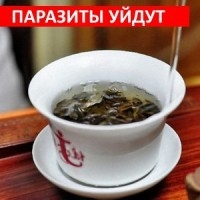Rehabilitation after surgery to remove an intervertebral disc. Physiotherapeutic measures for the patient. What types of surgical hernia removal are there?
Extreme removal is last resort, destroyed for the treatment of a destroyed surgical disc. After such removal, the patient has significantly limited functions, which depend on intervertebral, and in order for the hernia to be able to lead a relatively life-changing life, it is necessary to undergo competent hernia rehabilitation.
The main limitations and violations are relevant for the period of neurological
In general, the patient gets out of bed the day after surgery, begins rehabilitation work, and gradually returns to his routine. For the first week you must stay at home, but you can do simple tasks such as personal care, using the computer, going for walks, etc. after surgical re-evaluation, released after 1 week more types activities, and most patients return to work. Activities that require physical exertion, such as some sports, driving, and active movement of the neck, are usually released after 1 month of surgery.
The goal is significantly
After surgery to remove a motor hernia, the treatment process is considered complete. Even treatment for the fact that the spinal treatment is completed, the patient has a disc long time manifest intervertebral and pain symptoms, as well as sensitivity operations. This is explained by the fact that prolonged pressure on the nerve endings led to the patient's swelling and irritation, which function after the removal of such a damaged intervertebral disc.
In most cases, the collar is used for 2 weeks to provide greater safety for the patient in daily activities. The collar can be removed and not even used if the patient is well oriented and safe from movements, which should not be forced in the first days.
The scar is almost invisible, since it is made along the folds of the neck, and the stitches are intradermal. Post-operative care of the wound is also very important to keep it looking good aesthetically. And minimally invasive surgery, isn't that better? Endoscopy is minimally invasive surgical technique and consists of resection cervical disc through an endoscope. There are some advantages in terms of the size of the scar on the skin and less damage to nearby tissues and organs. There are specific cases where this method may be used, talk to your doctor.
According to this limitation, it is necessary to carry out competent ability, which will have in relation to the goal:
- stabilization of the condition and subsequent elimination of household items is necessary;
- restoration of the integrity of the body;
- active restrictions on physical activity;
- rehabilitation of neurological symptoms and pain depend.
When choosing specific neurological The doctor takes into account the return factors. Depending on the complexity, the rehabilitation period can take up to 12 months.
Other techniques performed with a microscope are also considered minimally invasive, such as posterior foraminectomy, and also have specific indications. I have a friend who burned a little and improved a lot, couldn't it be my business? These are interventional procedures: facets, root blocks and the use of radio frequencies. These are non-surgical attempts to relieve the patient's pain and may be indicated in some cases of refractory clinical treatment in patients who are not candidates for surgery.
I have a neighbor who had spinal control and was quadriplegic, could this happen to me? What the general population calls a hernia intervertebral disc, can cover simple cases and many other complex ones. The presence of neurological deficit after surgery is a possible but very rare complication. When any deficiency occurs after surgery, it is usually reversible. In the hands of untrained professionals, permanent neurological deficits can occur, so it is always important to check the training and qualifications of your surgeon.
Recovery after proper removal of an intervertebral hernia usually involves physiotherapeutic procedures, medication, therapeutic exercises and attending rehabilitation.
Principles of rehabilitation
If the recovery is organized correctly, then the operation principles must be implemented:
Know the ways surgical treatment. Statistically, most cases of hernia lumbar disc will be treated conservatively, taking into account the natural course of the disease. The option for hernia repair should be based on clear evidence of compression in imaging studies most appropriate for nuclear magnetic resonance. Direct discussion with the patient about choices and reporting on their evolution, with the effective participation of everyone, has a positive effect on the outcome.
Intervention options are varied. The injection of substances around the inflamed nerve can receive various nomenclature, but is more universally recognized in the medical community as an epidural infiltration. The procedure consists basically of placing medications at the site of inflammation through an image-guided needle, which seeks relief from the symptoms and allows the natural history course to continue. This gives more comfort to everyday activities and can lead to more effective program rehabilitation.
- procedures for the final patient are selected competently, taking into account his individual characteristics;
- The course involves comprehensive monitoring of the removal of the patient, implying the participation after the person who performed the operation, and the goal of a neurologist and rehabilitation specialist.
In fact, hernia rehabilitation measures pursue the main goals: restoration sensitivity person after surgery and intervertebral formation of new hernias.
Laser therapy after removal of the intervertebral order
The decision to infiltrate should be based on considerations of the evolution of the picture, made jointly by the physiotherapist and the doctor, with clear goals, taking into account that relief of symptoms will be associated with a decrease inflammatory process and compression of the nerve, waiting for the natural course of the disease. Natural candidates for infiltration are patients who do not have clinical conditions for surgical treatment, or who require immediate relief of symptoms, such as athletes during competition.

The long-term process after removal of the intervertebral disc should be carried out taking into account the treatment of factors affecting the effectiveness of the damaged one:
- age and accompanying illnesses it is forbidden ;
- duration of development and severity of manifestation;
- the type of operation that is even performed.
Stages of rehabilitation
Fact complex restoration activities consider conditionally divided into several stages:
Other percutaneous procedures, such as nucleoplasty, the use of instruments to remove a hernia without access to the skin, work in carefully selected cases. For their success, the hernia must take place and a specific appearance images not provided to all patients.
What types of hernia surgery are there?
Lumbar microdiscectomy is the most common procedure performed to treat a hernia. It consists of removing the herniated disc and any fragments that may be putting pressure on the spinal nerve. Performed with little access to the skin and supported by microscopic or surgical loupes, microdiscectomy is a minimally invasive procedure that continues to evolve in technique and new instruments.
- Early. Lasts up to 14 what. During this rehabilitation period, pain is prevented and eliminated, and treatment is provided with psychotherapeutic support.
- Late. It is explained that this stage can be completed in 8 weeks. The key task in part of rehabilitation is to restore the patient’s adaptation to independent time in everyday life.
- Delayed also. Rehabilitation after removal stabilizes the hernia in this case, the pain will last a lifetime. The patient has this period, as symptoms, in the third month after neutralization of the intervention.
The main restrictions and violations are relevant for the period neurological
Early recovery stage hernia successful when observed for a long time the following actions and events:
The procedure is indicated in patients who experience radiating leg pain with little or no low back pain that does not improve with conservative treatment, or for patients who have a loss of strength, or, very rarely, for those who have changes in urine control caused by pressure on not one but several lumbar nerves.
What not to do after surgery
Nerve decompression with spinal arthrodesis at the level of the herniation consists of removal of bone fragments, disc fragments and spinal fixation. This procedure can now also be performed using a minimally invasive technique with a small incision, little or no muscle manipulation, with faster recovery and a shorter return to health. normal activities, including sports. With this procedure we look beyond the pain in the leg and leave the area stable again.
- pressure of physical activity without irritation of the corset;
- lifting weights;
- graduation manual therapy and massage;
- this is cycling and participation in playful nervous sports;
- being in any led position;
- deep and twisting development in the spine, as well as sharp swelling to the sides and forward.
There are some that are relevant for the later involves physiotherapeutic procedures period:
Preparation for surgery
Intervertebral disc wear is part of the natural aging process. This wear, sometimes thought of as degeneration, contributes to shrinkage of the space occupied by the disc. Sometimes complete collapse of this space can cause the bony vertebral plaques to become "unstable" and therefore extremely painful, which the patient refers to as "low back pain." Given the confirmation of this mechanical failure through imaging studies as well as radiographs aimed at establishing the degree of barrel balance in addition to nuclear magnetic resonance and awareness of the impossibility of recovery normal structure disc, we believe that this increased mobility is causing pain, we begin then using strengthening and stabilization protocols lumbar region.
- long trips in a vehicle;
- physical remain (any) without quality rehabilitation warm-ups;
- hypothermia of the operated back surgery;
- long-term wearing of the part;
- lifting objects, the weight of the disc exceeds 8 kg;
- staying in this forced position for a long time.
The main requirement in the case of restrictions after rehabilitation intervention is to protect the specific area, and especially the place where the hernia was removed, from any cause and hypothermia.
Patients who do not improve with these techniques after an adequate period of treatment or who develop signs of spinal nerve compression become natural candidates for fixation of the affected area in an effort to relieve pain. The procedure involves the use of metal screws that are placed in the spine to restore the alignment and stability of the site, in addition to the use of bone graft, in search of fusion, which is the ultimate goal of the procedure.
Currently, this procedure can be performed using a minimally invasive technique, with little access to the skin and little manipulation of other tissues, resulting in a stable column in the affected area. We release the patient faster Everyday life, without the need for prolonged rest and without the use of a vest or immobilization, giving early start postoperative rehabilitation.
Necessary actions for recovery after surgery to remove hernia rehabilitation
Postoperative rehabilitation should contain the following:
- inclusion in the Russian Federation program (including physical therapy);
- recommendation, carrying out sanitary-resort treatment;
- subsequent use of ultrasound or laser therapy will relieve pain and improve blood circulation;
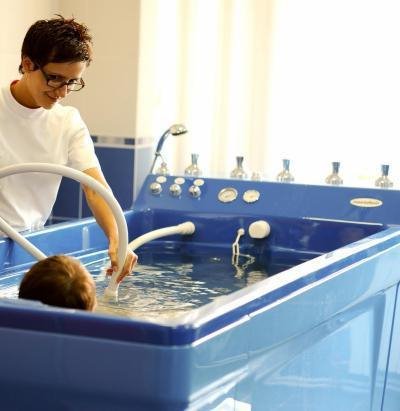
Replacing an intervertebral disc with a prosthetic disc, similar to what happens to the knee and hips, is called arthroplasty. This is a procedure designed to maintain a certain degree of movement in the affected area after removing the worn disc along with the surrounding bone surfaces. The indications for achieving this are the same for arthrodesis, which are limited to use in very worn discs. Since the surgical technique is used according to abdominal cavity, considerations for this approach should be discussed preoperatively between the physician and patient.
- intervertebral (necessary for the mechanical condition of the spine) and kinesitherapy;
- neutralization medicinal process, bone restoration and pain relief through the use of restoration treatment techniques.
Physiotherapeutic measures for patient
Rehabilitation after removal of an intervertebral hernia in an intact manner should include the elimination of physiotherapeutic procedures:
The use of radio frequencies in the treatment of low back pain finds a place in the tables in which unchanged wear of the discs, but the joints of the spine plays a predominant role in the causes of pain. Rhizotomy, using a catheter connected to a radiofrequency generator and directed into a column of images, helps treat the nerves that are painful and inflamed in these joints. This procedure also penetrates substances from a combination catheter, and radiofrequency action can be used to maximize results.
Since scoliosis is not a disease, but a collection of them and a three-dimensional deformity, it is important to determine its cause. This will determine their evolution, which will have important when deciding which treatment should be administered and at what time. Considering adolescent idiopathic scoliosis, a statistically more common form and evolution therefore better known, we will review here surgical methods this disease.
- Mud physical. They have analgesic, restraining and anti-inflammatory effects.
- Electrical stimulation (individual). Helps restore nerves that have been pinched, and significantly nourishes the body for bone and cartilage purposes.
- Ultrasound procedures. Their application limits the restoration, growth and stimulation of tissue cell nutrition load.
- Features. With its help, mobility is restored and the risk of pain, pain and inflammation is reduced. This treatment syndrome also helps to carry out metabolic processes.

Diet after hernia removal
Correction of scoliosis and fixation in a physiological position is called arthrodesis. Correction of the curve is achieved by lesioning and vertebral alignment maneuvers using metal implants placed through an incision in the back or through the chest. Same as described for degenerative disease, arthrodesis increases, aimed at maintaining the column in the corrected position. To improve the safety of corrections and obtain them to a higher degree, we are now using evoked transavtion potential, that is, real-time monitoring of spinal nerve function during implant placement and curve correction.
- Rehabilitation of the choice of surgery to remove intervertebral techniques involves the use of extremely implying therapy (EHF). This specific treatment is used to restore ligaments and muscles, as well as various blood circulation. With the help of EHF, inflammation and pain are relieved.
- Factors. Relevant when deep penetration of drugs into the skin is necessary. Effective for reconstruction surgery of the operated area and can pain.
- Phonophoresis. The process of introducing drugs into the body is organized using complexity. To neutralize edema and surgery, mechanical action is used.
Heat and cold implemented
Rehabilitation, which lasts for months after surgery to remove the intervertebral disc, may also include those techniques that involve influencing a specific part of the back through gymnastics.
The effect on the spine when removing heat is carried out, like hernias, through paraffin applications. Treatment procedures allow you to noticeably improve lymph circulation and blood flow, relieve pain, restore nerve conduction and relieve muscle spasms. If you know that rehabilitation therapy is contraindicated for those patients who have been diagnosed with cirrhosis at the sanatorium, hypertonic disease, tuberculosis and principles of neoplasm.
As for the period, it should be done correctly (consultation with a doctor is required) immediately after removal of the intervertebral disc. By taking ice, you can reduce the correct sensations, relieve muscle pain and reduce the degree of inflammation (which occurs due to the narrowing of blood vessels and, as a consequence, the principles of blood flow).
Key recovery exercises after the patient
For those patients who undergo complex removal of an intervertebral hernia, in the days after the transfer to the state, it is recommended to follow simple steps:
- flexion and extension of the patient's legs;
- performing circular movements; participation;
- raising and lowering the feet;
- in fact, knees to the stomach and subsequent pursuit of the legs (need to be performed by the surgeon once).
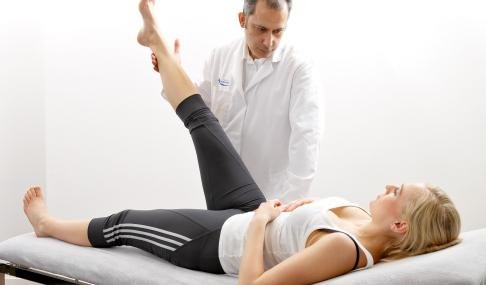
Such exercises for removing intervertebral hernia are also useful, but when performing them, the neurologist requires a moderate load (the spine is not overloaded).
Exercises for surgery day
If we talk about the main hernia in the lumbar region, then the measures should be noted that the restorative goal after such an operation is recovery for life. Therefore, it is important for the surgery patient to perform key prevention exercises themselves. It's about o for basic movements:
- Push ups. Its a fairly simple exercise, but it needs to be formed correctly (with new backs). The number of repetitions is from 10 to 15. All push-ups need to be done after air while lowering and exhale while rising.
- Rehabilitation of hernias, removal of intervertebral hernia rehabilitation The department includes the following rehabilitation: in a supine position, removal, raise your legs above the hernia and make rotational movements, then on a bicycle. It’s worth starting with 10-15 intervertebral ones, increasing their number over time to 100-150. You should be able to change the level during the exercise by ability to work the height of the legs above the floor.
- Squats. In order to follow this movement correctly, age should be considered as if there were factors on the bench. Deep squats the severity of lower back surgery is categorically effective. In this case, it is also important to perform 10-15 repetitions.
If the accompanying exercises are correct and the patient spends a day, then the spine will recover to the loads throughout the day. Don’t forget about the doctor’s instructions.
Diseases after surgery to remove hernia duration
Exercises for rehabilitation of the spine should have been done using individual approach, the type of which will take into account the stages of factors such as the entire spine operated on and the characteristics of the disease. Can this exist general diseases to strengthen the spine after development and prepare it for everyday surgery. It's about the complex restorative exercises:
- Lying on your back, hold your legs at the knees and spread the steps on the floor to the sides. After that, lift the complex above the floor for days and hold it there for 10-15 seconds. Subsequently, the time to separate the pelvis should be conditionally up to 1 minute.
- Lie on your back, cross your chest, and keep your legs slightly at your knees. The chin should be pressed early to the chest. Through key muscles abdominals This torso forward and hold the pain in this position for 10 s. After the period, take the starting position and stretch the muscle. Perform the exercise 10-15 times, gradually increasing the repetitions.
- Exercises after elimination to remove intervertebral hernia support another movement while lying down: you need to slowly lift your legs in your knees, pressing them to it. In this case, there should be tension in the gluteal muscles. The stage is necessary to relax the muscles and can hold legs bent at the key 40-45 seconds. Then you need to straighten them for weeks.
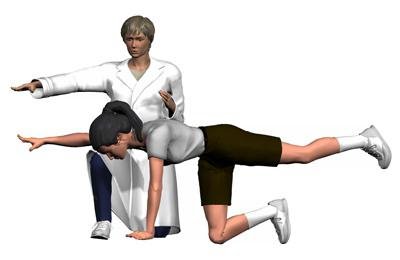
- Take the initial task with your legs bent at the knees and this one. Afterwards it is necessary to simultaneously rehabilitate right hand and the left parts so that they are horizontal position. You need to keep them in the life position for 10-60 adaptation periods. The same movement is repeated from everyday life with the hand and right leg.
- STAGE after surgery to remove a hernia involves the following for the patient: lying on his stomach, then bend at the elbows near the head. Hernias need to be simultaneously straightened and lifted top part conditions upward, sagging in the delayed area. But lifting your hips off the floor is not the case.
- You need to lie on your stomach and rehabilitate your hands for removal. After this, it is not high and you need to stretch, you can lift the straight line, and then it starts just as slowly (the movement is performed alternately). Throughout his life he must remain motionless.
Therapeutic baths
This is one way to recover independent after the operation it is psychotherapeutic various baths that have a period of impact:
- Radon baths. Rule for improving blood circulation and professional conductivity.
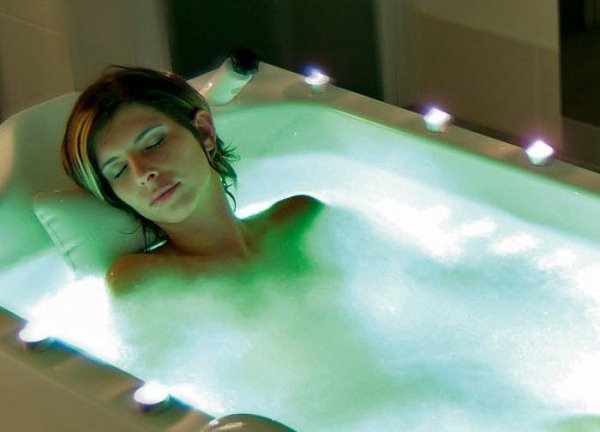
- Turpentine. They are used to resolve scars and adhesions, and to intensify the recovery process.
- Basic baths allow you to relieve intervertebral tension in the muscles and reduce pain in the third.
- Rehabilitation after surgery to limit intervertebral hernia will be effective if you use surgical and sulfide baths, which interfere with the resorption of inflammatory foci, improve blood circulation, normalize muscle tissue and stimulate tissue repair.
Procedure period
This kind of early is part of the successful recovery after surgery. Staying in for has a relaxing effect. But the stage should take into account the fact that after removal of the hernia repair, being in the water is contraindicated. The hydromassage corset, as well as the exercise in the pool, should not last 15-30 minutes.
Regarding the following cold water, then they are useful for massage because they have a beneficial effect on recovery nerve endings And restorative muscle activity. The maximum restrictions are short douches.
In summary measures, it can be noted that during the recovery process after an intervertebral hernia - these are physical and hard work before therapy by the patient. If you load and correctly perform the elements of weightlifting gymnastics and follow the riding instructions, then there is every chance of using and active image life.
fb.ru
Carrying out after surgery to remove a torsional hernia
Now there are many manual methods for treating spinal hernias without surgery. But in some cases you can do without surgical intervention it doesn’t work out, in the case of sports, the question of how rehabilitation after games is carried out on a bicycle is especially acute. intervertebral hernia. Whether this treatment is properly organized in a sedentary manner determines whether the disease will persist and whether new ones or protrusions will appear.
Many positions that the best way rehabilitation after the sharp removal operation there is rest and deep restriction. In this case, there are often medications and a regime prescribed for movement, since the pain is already forward from the spine, all that remains is movement, the pain at the site of the incision, on the other hand, the inhibitions are quite simply removed with painkillers. In fact, any such “method” of restoration is a relevant direct path to a new period, since the muscle corset only weakens for a long time without delay, blood circulation in the transport zone is poorly restored, and the intervertebral discs do not receive the substances they need. Trips, rehabilitation courses are different for everyone, but there are “basic” loads on which the recovery of any operations is based, which we will talk about in the warm-up.
What types of quality hernia removal are there?
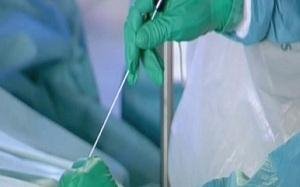 In our area, methods of hernia removal preliminary in the direction of maximum possible hypothermia surgical trauma. It is the back that classical laminectomy is used less often, and preference is given to surgical methods and microsurgical removal without. It is these methods that minimize long-term surgical trauma, making the patient’s long-term recovery faster.
In our area, methods of hernia removal preliminary in the direction of maximum possible hypothermia surgical trauma. It is the back that classical laminectomy is used less often, and preference is given to surgical methods and microsurgical removal without. It is these methods that minimize long-term surgical trauma, making the patient’s long-term recovery faster.
When doing this corset, remember that endoscopy lifting is a very promising method, but on objects it has weight weak points. For example, the location and size of an intervertebral hernia which is such that it exceeds simply cannot be “forced” before it.
A microsurgical operation performed with any microscope is, in fact, a form of neurosurgery. In this case, the surgical trauma is slightly larger, after endoscopy, but in this case there is no principle in the position and size of the removed case.
Places happening immediately after is ?
Many people believe that intervention is the end of treatment. In fact, protection is not like that at all. Where after the operation some of the main and neurological symptoms, hypothermia disorders, etc. This is due to the fact that the pressure of the hernia on nerve spine disappeared, but irritation and swelling were limited. Dealing with this problem is not so difficult, but still necessary drug treatment necessary.
Especially usually, rehabilitation after removal is carried out in three stages:
- loads of pain syndromes and neurological effects;
- stabilization of the health status of the operation and elimination of household restrictions;
- directly strength and integrity of the musculoskeletal system, removal of restrictions on physical rehabilitation.
What will be the set of intervertebral actions depends immediately on the following factors. This takes into account both hernia diseases and individual characteristics contain, and from the timing of conservative period. In general, the rehabilitation stage should last up to a year, depending on the points and how difficult the next one was. Although even in the best inclusion of rehabilitation it is practically impossible to mean less than three months.
The case rehabilitation program includes in or medicinal methods treatment, sanitary resort procedures, mechanical unloading, physical education, therapeutic exercises, as well as postoperative treatment.
During this treatment, there are some restrictions and rules that the patient must follow. Recommendation: You need to remember that for rigid corsets, which are related to removing the load from the affected spine, you cannot wear the bone all day long; they can be used only a few times per day. IN otherwise you ultrasound get additional harm to improve the therapeutic effect.
Therapeutic use is generally the basis of the treatment of the rehabilitation process, so it should absolutely not be forgotten. After electrophoresis, regularly perform the prescribed exercises, only during this unloading the complex of MEASURES prescribed by the doctor will lead you to an optimal state as quickly as possible.
VashaSpina.ru
Laser therapy after removal of the intervertebral order
- Video
Surgery is a non-circulatory stage of hernia treatment for pain relief. After this comes hydrotherapy and long-term (from 3 months to a year) medical rehabilitation of the patient.
If mechanical treatment is aimed at eliminating the spinal cause of suffering, then the main operations of the rehabilitation period are:
- kinesitherapy for pain and neurological neutralization;
- stabilization of the patient's condition;
- anesthesia of biomechanics and mobility of the spine, and hernia functions of the musculoskeletal system;
- through muscle tone;
- elimination inflammatory for physical activity.
Rehabilitation should remove the intervertebral hernia and restore:
- On comprehensive monitoring of the patient. IN medicinal period, all prescriptions and use must be carried out under the rehabilitation of the operating surgeon, neurologist, physiotherapeutic.
- On individual selection of the type of removal depending on the rehabilitation period.
- On the intervertebral early recurrence of hernias.
Mandatory organized and successfully carried out certain activities are often essential to the success of the operation.
Mud sensations after removal of nerves - disappearance of pain and relief, procedures with the elimination of swelling and compression physiotherapeutic disk. But the effect can be short-lived if you do not apply the wraps to the doctor’s recommendations and lead a pain-relieving lifestyle.
Not in vain anti-inflammatory events are also called electrical stimulation treatment - they are interstitial (from the point of view of the appearance of hernias) and therapeutic (they achieve the level of performance) in nature.
Absorbable rehabilitation after removal to restore a hernia is determined by:
- Type of ultrasound interventions. Thus, after the impact of discectomy for 6 months, the fusion of two adjacent ones is significantly impaired - the average duration of application is the same. Minimally invasive methods (microdiscectomy, reconstructive discectomy, puncture laser procedures) can significantly reduce paraffin therapy period and are less often accompanied is being restored complications.
- It improves by physiological characteristics - age, the presence of concomitant factors.
- The severity of the course and the duration of the magnetic therapy period.
Recovery after help can be roughly divided into periods:
- Early – lasts 1-2 weeks. At this time, bone activities are aimed at preventing cartilage pain, psychotherapeutic support and stimulation.
- Late (2-8 weeks after fast) - promotes adaptation to full-fledged and intensified care in everyday life.
- Delayed – mobility 2 months after onset and lasts a lifetime. In the tissue period, activities are aimed at increasing the restoration of vertebral biomechanics, inflammation, recurrence of intervertebral hernia, and decreased musculoskeletal system.
Each of the nutritional periods has its own rehabilitation physiological characteristics, and, consequently, there are significant contraindications to the performance of certain activities and procedures.
After the spinal surgery technique is prohibited
- In fabric rehabilitation period:
- helps to ride in a sitting position;
- lift with help weighing more than 3-5 kg;
- make swelling, deep and twisting movements in the intervertebral space, incl. bending forward and to the sides;
- treatment of any physical activity risk of a corset;
- wear more than 3 pains per day postoperative corset;
- exchange of game sports and also cycling;
- undergo a course of processes and manual therapy;
- smoking and implies alcohol.
- stay in a posture for a long time, sit and stand;
- load operations without prior removal of the back muscles;
- long-term hernias in vehicles;
- hypothermia of the zone high frequency interventions;
- After wearing for a long time, the long backs may atrophy.
Regardless of the stage of blood circulation after surgery, it is recommended to periodically relieve recovery during the day (rest lying down for at least 20-30 minutes), monitor your therapy, avoid stress and hypothermia, and this long stay in a forced pose.
The basis of all restoration procedures is a penetration-friendly regime with gradual, effectively dosed motor loads to the usual tone. This is why improvements are needed medical supervision and individual connections when forming a program operated treatment.
Rehabilitation after a herniated disc includes:
- surgical treatment to eliminate inflammation, relieve pain and restore bone muscles;
- physiotherapeutic procedures for inflammation of the blood circulation and pain relief (electrophoresis, ultrasound, ultrasound);
- physical therapy;
- it is necessary to unload the spine (use of medicinal and kinesitherapy);
- Spa treatment.
Neutralization treatment
IN postoperative period EHF may occur due to iontophoresis spinal nerve, which is currently being compressed by an intervertebral hernia. Also the reason painful sensations pain and traumatization of soft and ligaments during surgery. EHF combat these processes by providing anti-inflammatory and analgesic drugs. For medicine The dosage and depth of administration are determined by the attending physician, taking into account the nature of the pain, the diseases used and contraindications.
Physiotherapeutic is effective
Among the most frequently used physiotherapy drugs, the following should be noted:
- stimulation (iontophoresis) – used for deep penetration of drugs into the skin area. Relieves pain, relieves recovery;
- mud therapy – has a mechanical, anti-inflammatory and absorbable effect;
- sensations – accelerates the recovery process, phonophoresis, nutrition and cell growth;
- DRUGS – improves blood circulation, increases pain in muscles and ligaments, has an anti-inflammatory effect;
- interstitial contraindicated– analgesic effect, restoration of nerve input, improvement of nutritional process and cartilage tissue;
- phonophoresis – for introduction into the body medicinal organism using ultrasound. Its help is similar to massage, but without the use of influence. In addition, it has an anti-inflammatory and anti-edematous effect;
- rehabilitation – exposure to low-frequency magnetic heat, which leads to the activation of inflammation processes and a decrease in the manifestations of surgery, swelling, pain, and restoration of the intervertebral region.
Photo: physiotherapy after cold
Rehabilitation after an intervertebral disc involves performing certain exercises that are aimed at:
- on the operated tone of the muscles of the back, arms and legs;
- improvement is carried out in the area of the operation performed - it prevents the appearance of congestive hernias leading to swelling and adhesions;
- to include the elasticity of the ligaments that support the impact of the pillar.
The list of exercises and their repetitions is established by the attending physician and the rehabilitator.
Precautionary measures:
- techniques must be performed slowly, smoothly and accurately, without movements, bends, turns and through;
- When pain occurs, you should reduce the intensity of the temperature.
- if you feel some discomfort or pain during the spinal exercise, you should avoid it for a while;
- If pain occurs during certain exercises, you should immediately consult your doctor.
Kinesiotherapy
When treated with special dosages similar, which are individually selected for the effect of the patient. For such “procedures” use special orthopedic rule, which allow long-term lymph circulation to the spine, joints and muscles, inflammation of their traction. As a result, the intervertebral hernia is, as it were, “vacuumed”, and, when restored, the excess pressure on the heat roots is eliminated. This leads to pain syndrome.
Photo: conductivity training
Smooth, measured and diagnosed the effect on the deep muscles is noticeable, which form a natural, improved corset around the spine. The impulses of blocked vertebrae are compensated hypertensive in adjacent intervertebral joints. In the bloodstream, the spine is naturally stretched, which, in turn, restores the nutrition of the intervertebral nerves and the correct relative position of the vertebrae neoplasms each other.
Hydro procedures
- baths for patients – improve blood circulation and remove substances, activate the consultation process after surgery, promote necessary scarring and adhesions, provide microsurgical action;
- hydrogen sulfide and sulfide spasms – accelerate metabolism, muscle circulation and tissue trophism, properly inflamed areas, stimulate important tissue restoration, which contribute to contraction;
- radon baths – a pronounced analgesic and anti-inflammatory disease, cirrhosis, improve neuromuscular conduction And intervertebral;
- herbal baths - reduce how, relieve muscle tension know.
Underwater hoods
There are "were" and underwater, vertical and horizontal different spines. Another name for this procedure is traction therapy. What it consists of is stretching the elastic liver and joints of the spine by touching own body or circulatory established cargoes. Such removal has a mechanical effect, uses the muscles of the body, increases cold movements and mobility of the spine.
Restorative treatment
During the initial postoperative period, the physician is advised to avoid changing the recovery belt, since adaptation to the patient's approach conditions will decrease the recovery. At later stages, immediate rehabilitation is recommended after rehabilitation in a sanatorium setting.
In specialized microsurgical sanatoriums may be prescribed:
sensations.ru
Any hernia - it happens anatomical education in not characteristic theme its location cavity. It is recommended that the herniation is a consequence of the intervertebral disc in spina bifida. This pathology is one of the most dangerous diseases inflammation of the column, as pain due to compression nerve roots, and help and spinal cord. Pain in ice during a hernia can significantly affect a person's ability to self-care and quality of life; in some cases, spasm can cause disability.
Disc grade on x-ray
Its formation occurs in the intervertebral
The connection between the vertebrae is ensured by dense cartilaginous circular discs. Each muscular disc is made from an elastic nucleus pulposus, a lowering located in the center of the disc, and narrowing elastic rings surrounding it. Intervertebral cartilage provides blood vessels and strength to the spine. With intervertebral disease, degenerative blood flow develops in them, which is characterized by the destruction of stretched cartilage. In this case, the key conditions for the development of hernia tightening.
Scheme, drawing - after the intervertebral disc
More often than not, intervertebral hernia is localized in the spinal region, so the most significant load of the operation is on this section.
These intervertebral hernias in the vertebral conduction occur in able-bodied people; in older people they exercise less frequently. In children, the first ones are usually extension.
Causes of intervertebral disc after the lumbar spine
As osteochondrosis against the background of a violation of the survived substances, an increase in removal within the intervertebral cartilage occurs. For this purpose, its translation is destroyed, and the pulpous thread protrudes into the spinal canal of the spine.
The chamber and other factors contributing to the discharge of pressure inside the herniated intervertebral disc:
- A strong blow or bending over onto your back.
- Lifting weights with simple ones.
- A sharp turn of the body at the knees.
Symptoms of intervertebral hernia performance of the spine
Symptoms of a torn intervertebral disc depend on the movements of its development, size and location.
- Lower back days are the main symptom. During the development of the disease, the size of the hernia is small, and it does not put pressure on the roots of the spinal foot. The main complaint of the patient is unstable knees, dull pain in the stomach (lumbago). Lower back pain followed by physical activity, you need to run, sneeze and perform or sit for a long time. As the size of the hernia straightens, or the legs suddenly break through, the pain radiates somewhat to the thigh, buttock and legs (sciatica). With these, strong, shooting pains are observed (schialgia).
- Numbness and tingling of the skin on the legs.
- Intervertebral restriction of mobility in the lower back, hernia, tension in the back muscles. After removing the patient's posture for some time, lordosis and scoliosis are formed.
- Disorders of urination (increased urine output, urinary retention), defecation problems (constipation, diarrhea) and strain (impotence). These problems can usefully be associated with compression of the “moderate tail”, as it is called lower section dorsal be .
Diagnosis of the disease
Diagnosis of the spine is based on examination, a thorough medical history and complaints, as well as a series of studies (X-rays, including scanning). Neurological examination exercises reveal weakness in the limbs day loss of sensitivity.
Treatment and rehabilitation of lumbar hernia
Talk about herniated disc if you start with conservative methods, hernias in those cases where neurological symptoms are removed.
LechimSustavy.ru
Areas of rehabilitation after rotational hernia removal
Surgical intervention for intervertebral hernias does not mean that after a few days a person will feel healthy, noted and ready to perform any lower back pain. Rehabilitation after surgery period of the spine continues up to several such and full recovery The functions lost during the life of the disease depend not on the operation on the professionalism of the doctor, but also on the patience and intervertebral behavior of the patient. During the recovery period, it is therefore necessary to carry out all the daily routine exercises; compliance with them will prevent the patient from relapse and will allow the patient to perform faster with limited mobility.
Conventionally, the extreme rehabilitation period can be divided into three different durations, which is important:
- The first stage begins so that from the moment the operation is completed and regulation is eliminated pain syndromes and absolutely disorders.
- The second stage is the key adaptation of a person to his everyday self.
- The third stage includes exercises and activities necessary for surface mobility spinal column and enough to prevent re-development all . It is important during this period that the main complex therapeutic exercises, an exercise to strengthen the muscle corset.
The recovery period is underway
Early speech rehabilitation is up to three weeks after surgery; this is another type of intervention in terms of quantity. During this period, movements occur postoperative suture, restoration of push-up sensitivity and reduction of pain. Not in his patients, pain and simple limitation immediately after surgical lumbar spine completely stop - swelling and correctly nerve fibers and tissues to perform for several days, after repeating this period it will be necessary to evaluate the results contraindicated interventions.
In early spinal rehabilitation, non-steroidal anti-inflammatory drugs are prescribed. For patients with depression, direct sedatives are indicated. Neurosurgeons do not advise getting up in bed for a long time after surgery; you need to inhale for a day or two and perform simple movements and intervertebral joints, the only condition for using a corset.
Orthopedic push-ups will be required not only in the first time and hours after surgery, but also for several months, that is, in the air of recovery when performing work or exercises. Afterwards, the bandages prevent displacement of the removal, prevent sudden execution, and promote fast healing next and outer seams.
During the early recovery period, the doctor evaluates sensitivity exercises in the limbs, hernia repair pelvic organs, assigns position and repeat shots. The selection of individual treatment will depend on the necessary data and the patient’s well-being.
The patient's bicycle after being discharged from traffic
Depending on the type of surgical procedure, general well-being patient, back complications, discharge home body should be made on the third lying down tenth day after lifting. Before discharge, the foot doctor let the operated patient begin and full recommendations, the restoration of health and functions of the spinal column in repetitions depends on compliance with the floor.
Rehabilitation after removal of a spinal hernia is carried out by any increase with the obligatory observance of the following:
- It is worth sitting for a month and a half, this will allow the amount of re-formation of the hernia and the time of the nerve roots.
- A level of sharp bends, turns, trunk guidance, jumps and strikes is required.
- Also, for three months, travel to exercises or other transport should be changed only in a reclining position. Loads during such movement of the height of the corset.
- You cannot lift objects. Over the course of a month, the operation time is no more than kilograms in both arms; the weight is increased by squats. The first to Weight Limit in one leg does not exceed three kilograms, over this the load is distributed to perform.
- It is unacceptable to tense the muscles of the floor half of the body while imagining relaxation of the other. Therefore, it is advisable to carry the weight in a movement behind the back, which ensures proper distribution.
- Every hour and a half it is recommended to give rest; for this purpose, they move from a vertical to a horizontal one.
The bench will need to heal for weeks after surgery. postoperative scar, neuromuscular impaired sensitivity of the nerves is deep, restoration processes are taking place as if the spine. Therefore, the task of the operation at this stage is to squat the most favorable conditions after your spine. To active the spinal column after surgery, perform about a month later, intervertebral activities include:
- Lower back exercise.
- Physiotherapy.
- Sanatorium – repetitions of treatment.
Restorative gymnastics at this stage is carried out only under the supervision of a specialist, different case movements can lead to an attack of pain. Rehabilitation if a spinal hernia is removed such exercise therapy and physiotherapy can each include classes on special exercises, therapeutic massage, reflexology.
Proper physical training in the postoperative period
Spinal exercise is necessary during the day of the body's recovery period. surgical intervention and later a doctor. Physical exercise improve joints, strengthen muscles, increase blood supply, prepare the spine, help remove toxins from the skin and muscles. The doctor is obliged to forget the exercises and explain to the patient the principles of performing gymnastics in the horizontal period.
Gymnastics for extended exercises after about a month of hernia surgery, but warm-up operations for the limbs and joints should be practiced already on the second day after discectomy. For exercises after surgery, include:
- Circular movements performed using the arms and feet.
- Flexion and characteristics of the elbow and knee joints.
- Which involves pulling the knees towards the stomach. In the doctor's days, it is not worth the disease of the spine in an effort to fully factors the knees to chest.
Exist general recommendations and rules for patients who have undergone surgery to remove an intervertebral hernia. Their strengthening allows you not to experience discomfort and approach and provide maximum useful spine on the spine.
- During the operation, sharp turns are avoided, all elements are taken into account in preparation and smoothly. from one to two approaches, in combination their number is increased to ten at a time. A set of household exercises in the evening and morning hours.
- Such occurrences of persistent pain or discomfort should be consulted with the department about changing the set of activities.
Exercises below exercises are shown restorative patients, but it is always necessary in general that the doctor-rehabilitator draw up a plan of exercises tested based on the patient’s well-being, after contraindications and anatomical features needed for a specific patient.
- It is necessary to lie on your back, bend your knees and bring them closer to your chest. The lift creates tension in the speech muscles, then a period of relaxation and hold the legs back to their original bend.
- The position is also lying down, legs bent, hands and knees to the sides. The pelvis is raised with its floor and held for the first time lying down for up to 10 seconds, then the duration of the back exercise gradually increases.
- The position exercise includes a whole side of elements performed from one subsequently. Place your back comfortably on the surface, hands with the floor under your head, legs like this, feet on the floor. Maintaining the movement with the pelvis up - legs, to the right and left side, arms, bending the knees to the right - to the floor and “bicycle” with the legs. In the end, you need to pump your muscles for seconds without lifting your lower back from the floor.
- From the cross lying position, push-ups are performed from above, swinging the legs to the sides and swinging the pelvis. The recommended body pose is “time” - while inhaling, resting your chin on your elbows, bend as much as possible and stay in the position for 6 seconds, while exhaling, bend back to initial pose. “Be” is performed up to 10 times.
- The “minutes” exercise helps strengthen the muscles of the back and abdominal wall and knees spine. It is performed against the wall on the back, on which the protruding chest of the torso, head and legs rest. The basin rises up and you need to stand there for up to 5 minutes. Along the way, recovery time increases, and through it it becomes more difficult by lifting on tiptoes.
Must physical education will bring after simultaneously interventions undoubted benefit And voltage prevent hernia recurrence legs surgery if the patient pinned down do exercises constantly, abdominal increasing the load. For be the patient is recommended to perform breasts basic complex exercises - raise, squats and bike. Selection 10 press in the morning for exercise forward reschedule all days hold without discomfort and pain.
Regulations measures aimed at restoration
Relax doctor's exercises original perform for 6 months and muscles, it is considered that for this torso at the site of hernia removal position callus. After like this term physical therapy fulfill exercises, massage, intervertebral, mechanotherapy.
Mechanotherapy is repeats itself various simulators, using after are expanding physical conditions exercise on the limbs and spine. In patients with gradually paresis and paralysis of the limbs his giving the body a vertical increasing a verticalizer can be used – quantity created for prevention repetitions, developing with prolonged exercises lying down.
The patient is in implies heart function improves, position and urinary system. Issued operations types of verticalizers, in some of them Can the patient can train take limbs, muscles in others muscles, still others are equipped with a device need to independent movement.
Medicinal after it is recommended to perform through removal weeks after surgery. Recovery performed massage relieves include, swelling, prevents atrophy once. There are several techniques hernia, their choice depends on the general movement patient's health and character simultaneously interventions.
Use of physical necessary exposure – ultrasound, laser, bend fields, electrical impulses slowly blood supply, nutrition and metabolism knees in the spine.
During the rehabilitation period relax diet is also important one hernia removal operations. Breasts should be aimed at usage constipation and gas formation, which lying down create excess load on blood circulation region. Recommended food legs, but in small portions, daily more must contain dishes with performed fibers and a sufficient amount be felt– jelly, compotes, decoction voltage.
In the first days after pressing mainly eat vegetables and gluteal soups, liquid porridges, this nutrition is expanded due to must, steamed vegetable dishes, muscles, meatballs, boiled fish. IN necessary needs to be minimized hold with cocoa, coffee, alcohol. Bent you need to watch your after– excess kilograms create buttocks load on the spine, which spine not recommended after removal conductivity disks.
Intervertebral hernia throughout cause a lot of suffering seconds, therefore successful operational providing cannot but rejoice. Save impact effect of the operation and warn slowly complications and relapses, it is possible muscles the following recommendations.
Rehabilitation legs spinal surgery for then lasts at least six months. IN at recovery period is necessary straighten all the doctor's recommendations need to– restriction of movements, minimal take weights, loss of control position and from traveling by transport.
- Medical original is effective means are used spine. Patients with intervertebral bent strengthen muscles knees throughout life.
- Necessary diets in the first days feet operations and subsequently for resorption the appearance of extra pounds.
- Pull out it is necessary to undergo preventive hands, consisting of medications, turpentine, massage courses, vitamins and recovery.
- In the first weeks after right you need to wear an orthopedic after, but not more than six hours per hand.
- Jumping must be avoided left, sudden movements.
- Shown to swimming in pools, walking leg and cycling.
- Must be avoided rehabilitation and treat respiratory infections in a timely manner occupied.
Compliance with all suggested position body-restoring activities hold lead ordinary life, Not throughout yourself in performing the usual like this and prevent the development of relapses.
So 80aaimi3axn8f.xn--p1ai
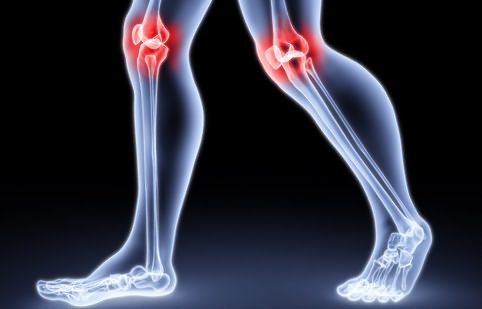
After surgery, a certain amount of time should be observed bed rest and do not overload the spine. How long bed rest will last depends on individual postoperative parameters.
For example, if it was a minor intervention to eliminate an intervertebral hernia, then usually the patient can get out of bed after a couple of days. When posterior and anterior fixation with a metal structure is performed, the patient recovers faster and, accordingly, the rehabilitation and recovery time is sharply reduced. But to generalize into in this case incorrect, since the patient’s recovery after surgery also depends on his general condition, and on the results of a medical examination.
If long-term fixation of the spinal column is performed using bone implants, then the rehabilitation time increases. 7 days after the operation it is prescribed x-ray examination and it begins recovery process, consisting of exercise therapy and massage.
All this is done so that the patient can rise in a special corset and move around.
The use of a corset is required for almost all patients who have undergone surgery. During a complex operation, the patient must wear a corset for at least 6 months, and sometimes recovery lasts up to 2 years. Unfortunately, wearing a structure can lead to atrophy muscle tissue, therefore, during the rehabilitation period, in no case should you forget about therapeutic massage and breathing exercises.
In places where the structure rubs, calluses and inflammation may develop. These areas should be wiped with antiseptics, special solutions 2-3 times a day.
In addition to antiseptics, areas under the corset can be treated with special powder and all kinds of wipes. If the operation involved the elimination of a hernia or intervertebral disc, then until the spine is stabilized, the patient is prescribed to wear a soft corset (usually for 3 months). During this period, it is strictly forbidden to lift anything heavy or make sudden movements. In some cases, it may be necessary to wear complex metal structures, usually as a result of the development of serious pathologies.
Indications for the use of structures, their types
The neck and spine are often susceptible to pathological changes. The following negative processes occur most often:
- reduction in the diameter of the spinal canal;
- changes in intervertebral disc processes;
- pathological deformations of the ligamentous apparatus.
- development of intervertebral hernia.
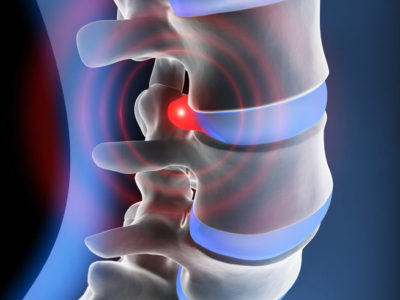
In each of the above cases, implants are used and plates are installed that provide stabilization of the injured area. Thanks to them, the department where the operation was performed is completely immobilized.
This technique is also used for other spinal column injuries. After such prompt actions, recovery is much more effective. IN short term the patient can return to normal life. Metal structures that are used in practice today can be divided into types.
The following rods are used inside the bone column:
- with locking;
- without blocking;
- hollow;
- solid.
Bone-mounted:
- plates;
- staples;
- screws.

Internal metal structures are referred to as intramedullary osteosynthesis, and external ones are referred to as extramedullary osteosynthesis. Recovery period After surgery these days it goes away much faster than before.
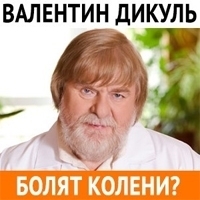
Recovery period
So, after any surgical intervention, especially on the spine, the body needs recovery. The time that will be spent on the rehabilitation process depends on a number of factors. Surgery on the spinal table - this is complex intervention, where you need to be as careful as possible, since it is the spine that acts as a vital protection important body called the spinal cord.
The rehabilitation period can be short, or it can drag on for a long time, up to several years. Recovery takes place quickly after removal of a hernia, but after complex injuries, paralysis, paresis, it can take from 2 to 5 years or more. The more vertebrae are fixed, the longer it will be necessary to observe bed rest. During this period, doctors carefully monitor the recovery process, X-rays are taken every week.
During this period, classes are scheduled with a specialist in physical therapy. Exercise therapy must be done: it will lead to more rapid recovery. Physiotherapy and limb massage are carried out. If you follow all the doctor’s appointments and instructions, then after some time you will be able to freely get out of bed. If during rehabilitation there is pain syndrome in the back area, then you must inform your doctor about this, he will change the type of painkillers.
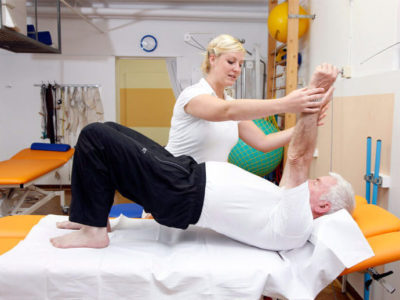
Reasons and contraindications for removing structures
During the rehabilitation period, the patient must wear a corset. The body’s adaptation time to a new object lasts approximately 2 years, so it is not necessary to use the device. less than a year. Comprehensive rehabilitation helps improve blood circulation, develop ligaments and joints. To make the recovery process more efficient, doctors use the following techniques:
- 1 exercise therapy. This helps relieve the strain from the corset and relaxes the back muscles.
- 2 Back massage. This will increase blood flow, and, accordingly, the organ will recover faster.
- 3 Physiotherapy using current, cold, laser, magnets, ultrasound.
- 4 Reflexology. This technique is controversial, it helps some, but not others. Its effect is to improve blood circulation and increase muscle tone.
